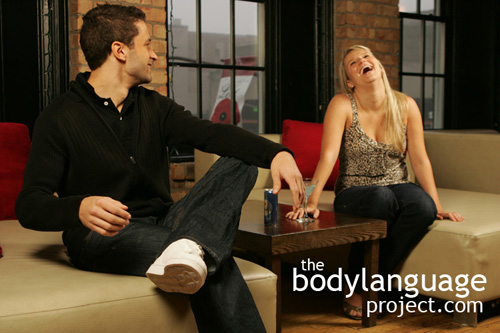We saw, in this chapter on smiles and laughter, that smiles are controlled by two sets of muscles called the zygomatic major muscles, that run down the side of the face to connect the corners of the mouth and the orbicularis oculi to help pull the eyes back. The orbicularis oculi produces crow’s feet, smiling eyes or Duchenne smiles, all names meaning the same thing; “real smiles.” The zygomatic muscles, on the other hand, are consciously controlled and can be a giveaway to a false smile as does asymmetry.
Next we looked at the origins of the smile, be it from fear as in the “fear grin”, or from happiness and whether happiness creates smiling or vice versa. We concluded that smiles today symbolize submission and are contagious. We then found that there are five commons smiles, the tight lipped smile with low intensity (indicating a hidden attitude or thought), tight lipped smile with high intensity (not a full honest smile but shows openness), the uneven smile (tongue-in-cheek humour or sarcasm), the upper smile (hidden agenda), the grin or smirk (indicating smugness and arrogance) and the broad smile (a true smile). We found that smiles generate leniency, release endorphins so can be addictive, and that women are more likely to smile than men and do so to placate them. We then covered context as it relates to humour and how humour has many different forms, how humour helps people bond and that it isn’t unique to humans since rats and gorillas emit similar vocalizations. We then looked at the differences between the sexes and saw that women laugh much more at men, than do men at women, suggesting a courtship link to laughter and that men use humour to playfully insult other men whereas women use it to bond. We then discovered that put-down humour can create belongingness so long as it is well received and avoids hitting on insulting truisms, that women should avoid snorting since it is unsexy and that laughter can help people recover from illness.

